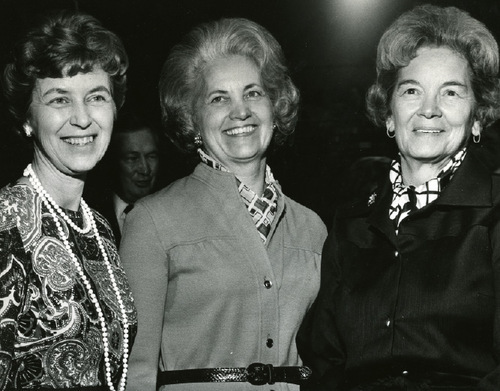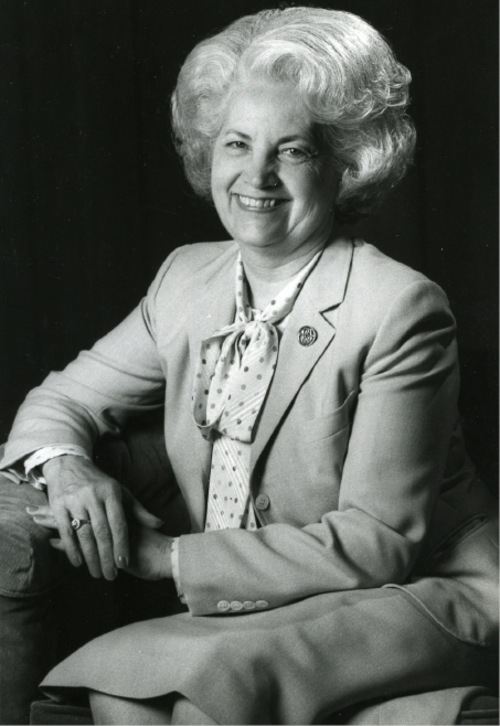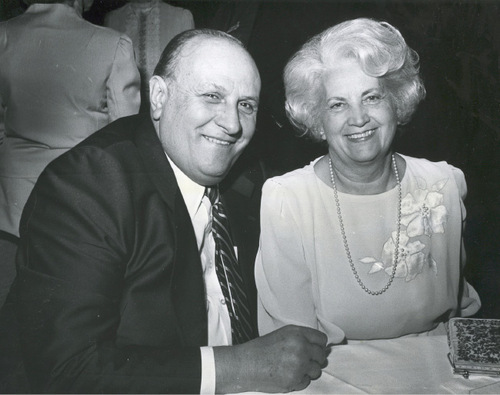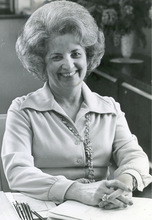This is an archived article that was published on sltrib.com in 2010, and information in the article may be outdated. It is provided only for personal research purposes and may not be reprinted.
On national television and newspaper front pages, she was the well-dressed, soft-spoken woman who became the face of LDS Church opposition to the Equal Rights Amendment.
But while Barbara Bradshaw Smith helped lead the faith's fight against the failed constitutional amendment, she also sought to expand women's roles, saying she supported additional rights but not the ERA.
The former LDS Relief Society president, who suffered from pulmonary fibrosis, died Monday at age 88 in Salt Lake City.
Smith was remembered by friends Tuesday as a loving and considerate person who presided over the women's organization within the Utah-based Church of Jesus Christ of Latter-day Saints from 1974 to 1984 — a tumultuous period for women in U.S. history and in the Mormon Church.
"Barbara took her church responsibility very seriously," said friend and confidante Aileen Clyde, who served in the church's Relief Society general presidency during the 1990s. "On the other hand, she felt she had to represent women."
Smith was appointed in 1974 by then-LDS President Spencer W. Kimball and counseled him on the future role women could play within Mormon culture, according to Lengthen Your Stride, the Presidency of Spencer W. Kimball, by his son, Edward L. Kimball.
Church leaders adopted the position that the ERA could threaten the family and women. At the same time, they held that women deserve more rights.
Smith attracted the national spotlight on several occasions as she spread that message across the country. She met with U.S. Presidents Jimmy Carter and Ronald Reagan and was recognized among women's leaders nationally.
Among other things, Smith appeared on "The Phil Donahue Show," a popular televised talk program in which she debated Sonia Johnson, an excommunicated Mormon who championed the ERA.
"Barbara handled that with grace," Clyde remembered. "But she said it was not pleasant."
Smith also was at the center of the controversial 1977 International Women's Year Conference in Salt Lake City. Critics claimed LDS women took over the gathering on orders of church officials in an effort to thwart the ERA.
"The church said we believe in equal rights for women," Clyde recalled, "but don't believe the ERA is the way to achieve them."
Smith, caught in the middle of the stormy convention, attempted to calm nerves and bring civility to the meeting, which often ran short of decorum. Throughout her service she sought to bring together disparate sides.
"Barbara will be remembered as a leader in times of great transition," Clyde said. "She had a marvelous character, and she was anchored."
Longtime friend Chieko Okazaki, a popular LDS author who served with Clyde in the Relief Society general presidency, remembered Smith as someone who "listened carefully to her sisters."
"People who worked with her had great respect for her," Okazaki said. "She didn't tell people what to think, but believed you had to work toward understanding."
Smith led without denigrating others, according to Florence Jacobsen, president of the LDS Young Women's organization in the 1960s and early '70s.
"They were telling us we couldn't be a housewife and a leader," Jacobsen recalled of the times. "But she said you could be leaders in your community and your church and still be a housewife. You could do both, and Barbara and I were united in this."
Jacobsen characterized Smith as "a great woman."
"She had lots of ability. We will miss her."
She was married to Douglas H. Smith, who died in 2009. The couple had seven children, 39 grandchildren and 84 great-grandchildren.
"She served with her heart, might and mind," son Lowell V. Smith said. "She loved the women of the church."
Lifelong friend Olive Beth Kimball Mack , a daughter of Spencer W. Kimball, said Smith was as kind and caring outside the spotlight as she was in public. Among other things, she threw parties for Mack's ailing mother.
"She always did things for my mother," Mack recalled.
Among Smith's trademarks: her well-dressed appearance and her articulate style.
"I always thought she looked beautiful and spoke so well," Mack said. "She was that way when she traveled around the world. And she was that way at home. She was a real model for me."
Looking back
The Equal Rights Amendment
R Section 1 • Equality of rights under the law shall not be denied or abridged by the United States or by any state on account of sex.
Section 2 • The Congress shall have the power to enforce, by appropriate legislation, the provisions of this article.
Section 3 • This amendment shall take effect two years after the date of ratification.
What happened to it?
The Equal Rights Amendment passed Congress in 1972 and required ratification by 38 states to become the 27th Amendment to the U.S. Constitution. That year, it was ratified by 22 states. In 1973, eight more approved the ERA. Just three ratified it in 1974; one in 1975 (Utah's Legislature voted it down in 1975); and one more in 1976. Indiana became the 35th and last state to approve the ERA in 1977. The seven-year deadline for ratification expired in 1979.
Source: equalrightsamendment.org









